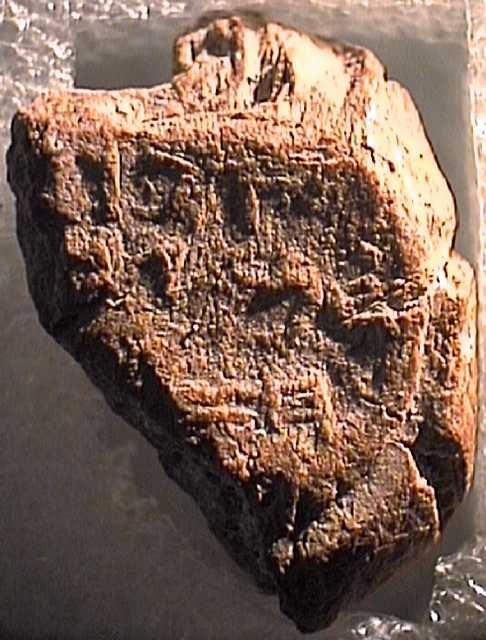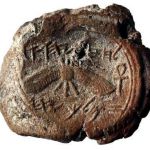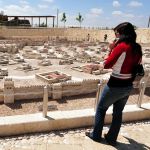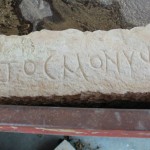“Land of Zebulun and land of Naphtali, the Way of the Sea, beyond the Jordan, Galilee of the Gentiles — the people living in darkness have seen a great light; on those living in the land of the shadow of death a light has dawned.” (Matthew 4:15-16)
Although many internationals seek to delegitimize the Jewish State, archaeology continues to support the ancient Jewish connection to the Land.
This month, Israel found a consistent champion in United States Congresswoman Rep. Ileana Ros-Lehtinen who rebuked those trying to delegitimize the Jewish connection to Israel. She stated before the US House of Representatives on December 18 that archaeological proof, like the recently discovered royal seal of King Hezekiah from the First Temple period (727–698 BC), eradicates any question negating Israel’s Jewish history. (JPost)
The seal, “discovered within the context of an archaeological excavation,” … “proves that not only is Israel the religious center for Jews, it is their ancestral and historic homeland,” Ros-Lehtinen said before the House.
“For quite some time, there has been an effort at the United Nations to delegitimize the Jewish State of Israel and to try to whitewash the Jewish people’s historical and Biblical connection to Israel,” she said. “Denying the historic connection of the Jewish people to Jerusalem is false. Amazing archaeological discoveries are frequently made that prove the roots of the Jewish people are in Israel.”
Over the holiday season, archaeological finds continued to delight and astound.
A marble slab with seven lines of Hebrew and Aramaic was unearthed at an ancient village on the northeastern side of the Sea of Galilee (Lake Kinneret). The slab includes the words “marmaria,” “the holy king,” “the merciful” and “amen.”
The marble slab, uncovered by Haifa University archaeologist Dr. Haim Cohen and his team at the Kursi Beach Excavation, has dated the slab to the fourth and fifth centuries, implying the ancient Jewish village of Kursi had existed there for a number of years prior.
“Until now we have not had any proof that Jewish settlements existed during this period along the eastern shores of the Sea of Galilee,” the archaeologists stated. (Daily Mail)
The text, primarily Aramaic words in Hebrew lettering, seems to be a synagogue dedication, says Hebrew University inscriptions-expert Haggai Misgav, who worked at the site. Either way, there would be historical interest in Cohen’s suggestion that the term “marmaria” could mean “the rabbi of Mary,” since the word “mar” can be translated rabbi. (Times of Israel)
“No similar artifact has ever been found before in Israel, and the finding confirms for the first time that the ancient village at the site was Jewish or Judeo-Christian,” writes the Embassy of Israel in the USA. “The combination of all findings at the site since its discovery in the 1960s prompted researchers to look at the New Testament, and in particular to Jesus’s visit to the area.”
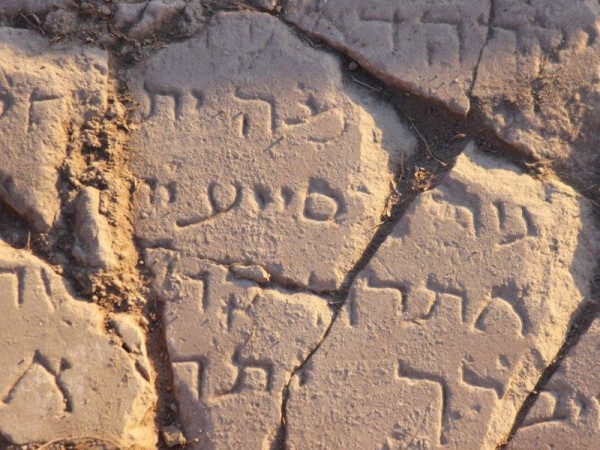
Excavations at the Kursi site on the shores of the Sea of Galilee have uncovered an inscription engraved on a large marble slab. The inscription, which is written in Hebrew letters, dates back c. 1,600 years. Nothing like it has ever been found before in Israel. The artifact confirms for the first time that the ancient settlement at the site was Jewish or Judeo-Christian. (Photo by Jennifer Munro)
“According to the New Testament, Jesus came to Kursi after crossing the Sea of Galilee from one anchorage to another,” the Embassy statement said. “Since this is the only harbor in the area, the scholars believe that this story, together with the inscription indicating the Jewish origins of the settlement, provides archeological evidence that this site may indeed be the Kursi of the New Testament.”
In “the region of the Gadarenes” (Matthew 8:28), thought to be Kursi, Yeshua performed the Miracle of the Swine, casting out a legion of demons from two men and commanding them into a herd of pigs.
Dr. Cohen and Prof. Michal Artzy of the Hatter Laboratory in the Recanati Institute for Maritime Studies at the University of Haifa are working on the slab’s Aramaic translations.
A second seaside dig, along the Mediterranean at Caesarea Harbor National Park, uncovered on December 24 a hand-carved marble ram, also possibly of a religious nature and connected to New Covenant imagery of Yeshua or his disciples.

An impressive marble statue of a ram, an ancient Christian symbol for Yeshua (Jesus), was discovered on Christmas Eve. (Photo by Vered Sarig, the Caesarea Development Corporation)
The ancient ram discovered in Caesarea by archaeologists Peter Gendelman and Mohammad Hater, in connection with the Israel Antiquities Authority (IAA), measures 1.3 feet tall by 1 foot long. The ram’s fleece and curly horns remain visible and only its front legs are missing.
The ram has been dated to the Byzantine period, from the sixth or seventh centuries A.D. Hater and Gendelman said the statue might have been designed during the Roman period and repurposed for use at a later date in a Byzantine church.
“In ancient Christianity, Jesus was not portrayed as a person. Instead, symbols were used, one of which was the ram,” Gendelman and Hater wrote for the IAA press release.
“In Christian art the ram is often depicted carried on the shoulders of the ‘Good Shepherd’ (that is, Jesus, who is portrayed as the shepherd tending his flock), and sometimes the ram is situated to the left or right of Jesus,” the IAA added to the press release. “In Christianity the ram, like the lamb, represents the faithful, or Jesus himself, whose anguish and death were meant according to Christian belief to atone for original sin).”
The statement points to John 1:29 as the reference for this association: “The next day John saw Yeshua coming toward him and said, ‘Look, the Lamb of God! The one who is taking away the sin of the world!’”
“It may or may not be a coincidence, but the statue was uncovered on Christmas Eve,” said Gendelman and Hater. “Caesarea never ceases to surprise as evidenced by this amazing statue that was discovered today.”





